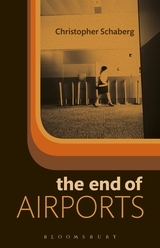
Dr. Christopher Schaberg’s new book The End of Airports was substantially cited in the New Yorker magazine.
Air Head
How aviation made the modern mind.
By Nathan Heller
February 2016
The forecast for the industry, accordingly, is bleak. “What is changing is that there is no promise of change, only a sort of numb acceptance of the beleaguered experience of flight,” Christopher Schaberg writes in “The End of Airports” (Bloomsbury), a wandering but well-fuelled study of air travel’s fading profile in our digitally transported age. “This acceptance is often signaled and mediated by where we look in airports: down into our palms, where faster and quieter machines connect us to one another.” Schaberg teaches literature, at Loyola University, in New Orleans, but he used to work at the airport in Bozeman, Montana, and his interest in the culture of flight arises from years spent on the tarmac and at the check-in desk.
Schaberg’s first book, “The Textual Life of Airports” (2011), explained how the airport mythologized and subverted air travel for passengers. That work emerged from his dissertation, and it followed a style of feverish pop-cultural close reading strangely valued in some academic quarters. It sometimes seemed a touch insane. (Puzzling over a Leo Cullum cartoon from this magazine—a guy dragging himself through the desert on all fours hears a boarding call and frets, “I’ll never make it”—Schaberg complained that the drawing “goes against the environmental writer Gary Snyder’s assertion that crawling can help people get to know their bioregions.”) “The End of Airports” is, pleasantly, less ramrod and more personal. Schaberg recalls the moment when air travel marked the apogee of cosmopolitan romance; he believes that the future favors virtual experience. He tells us, “In a world where social networking can facilitate revolutions, and where connections happen as easily online as off, it seems inevitable that moving hundreds of bodies around in large vessels will go out of fashion.”
Surprisingly, the numbers do not bear this out. In 1960, a hundred million people flew. In 2006, two billion did. Today, after the advent of the mobile Web and the intensification of terror-inspired travel constraints, 3.5 billion people fly every year. Schaberg’s inquiry is vexed, partly because he can’t decide whether the problem with flight is that it’s unfashionable or that it’s technologically obsolete. But the real contest lies elsewhere. The battle between jet planes and smartphones isn’t about speed or glamour. It’s about ways of knowing.
